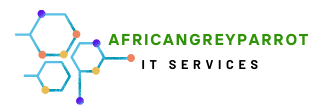In an era dominated by digital transformation, the regulatory landscape surrounding data privacy and information security is continuously evolving. Organizations, regardless of size or industry, face the formidable challenge of not only keeping pace with these changes but also ensuring compliance with the latest standards. One such significant development is the Cybersecurity Maturity Model Certification (CMMC), which has become a focal point in the broader context of data protection and information security. Owing to this, the demand for CMMC consultant Virginia Beach has gone up.
- The Rising Tide of Data Privacy Regulations: With the growing awareness of the importance of safeguarding personal and sensitive information, governments are ordaining rigorous data privacy regulations. Laws like the General Data Protection Regulation (GDPR) in Europe and the California Consumer Privacy Act (CCPA) in the United States have set the stage for a global shift towards enhanced data protection measures.
- CMMC as a Catalyst for Information Security: The Cybersecurity Maturity Model Certification (CMMC) is a framework that specifically targets the defense industrial base, aiming to enhance the cybersecurity posture of organizations within the supply chain. As part of regulatory trends, CMMC introduces a tiered approach to certification, mandating different levels of cybersecurity maturity based on the sensitivity of the information handled by contractors and subcontractors.
- Increased Emphasis on Supply Chain Security: Recent high-profile cybersecurity incidents have underscored the vulnerability of supply chains to cyber threats. Regulators are responding by placing greater emphasis on ensuring the security of the entire supply chain. CMMC, for instance, addresses this concern by requiring defense contractors to implement robust cybersecurity measures to protect sensitive information throughout the supply chain.
- Privacy by Design: The concept of “privacy by design” is gaining prominence, encouraging organizations to integrate data protection measures from the inception of any new system or process. This proactive approach aligns with the fundamental principles of CMMC, which seeks to embed cybersecurity practices into the fabric of organizations rather than treating them as isolated requirements.
- Continuous Monitoring and Adaptive Security: Regulatory trends indicate a shift towards continuous monitoring and adaptive security measures. Instead of relying solely on periodic assessments, organizations are encouraged to implement real-time monitoring and adaptive security controls. CMMC, notably, emphasizes the importance of continuous monitoring to ensure a dynamic and responsive cybersecurity posture.
- Global Collaboration for Cybersecurity: Recognizing that cyber threats are not confined by geographical boundaries, there is a growing trend towards global collaboration in cybersecurity efforts. Initiatives like CMMC consulting, while initially focused on national defense, contribute to the broader global effort to raise the cybersecurity standards of organizations.
- Accountability and Enforcement: Regulators are increasingly holding organizations accountable for data breaches and security lapses. The penalties for non-compliance with data privacy regulations can be severe. CMMC, aligning with this trend, introduces a certification process that holds contractors accountable for meeting the specified cybersecurity requirements.
As regulatory trends in data privacy and information security continue to evolve, organizations must prioritize compliance to navigate the complexities of the digital landscape successfully. The integration of frameworks like CMMC into broader data protection strategies becomes pivotal, especially for entities in the defense industrial base. By staying abreast of regulatory developments, adopting a proactive approach to cybersecurity, and leveraging frameworks like CMMC, organizations can not only meet compliance requirements but also fortify their defenses against the ever-evolving threat landscape.


